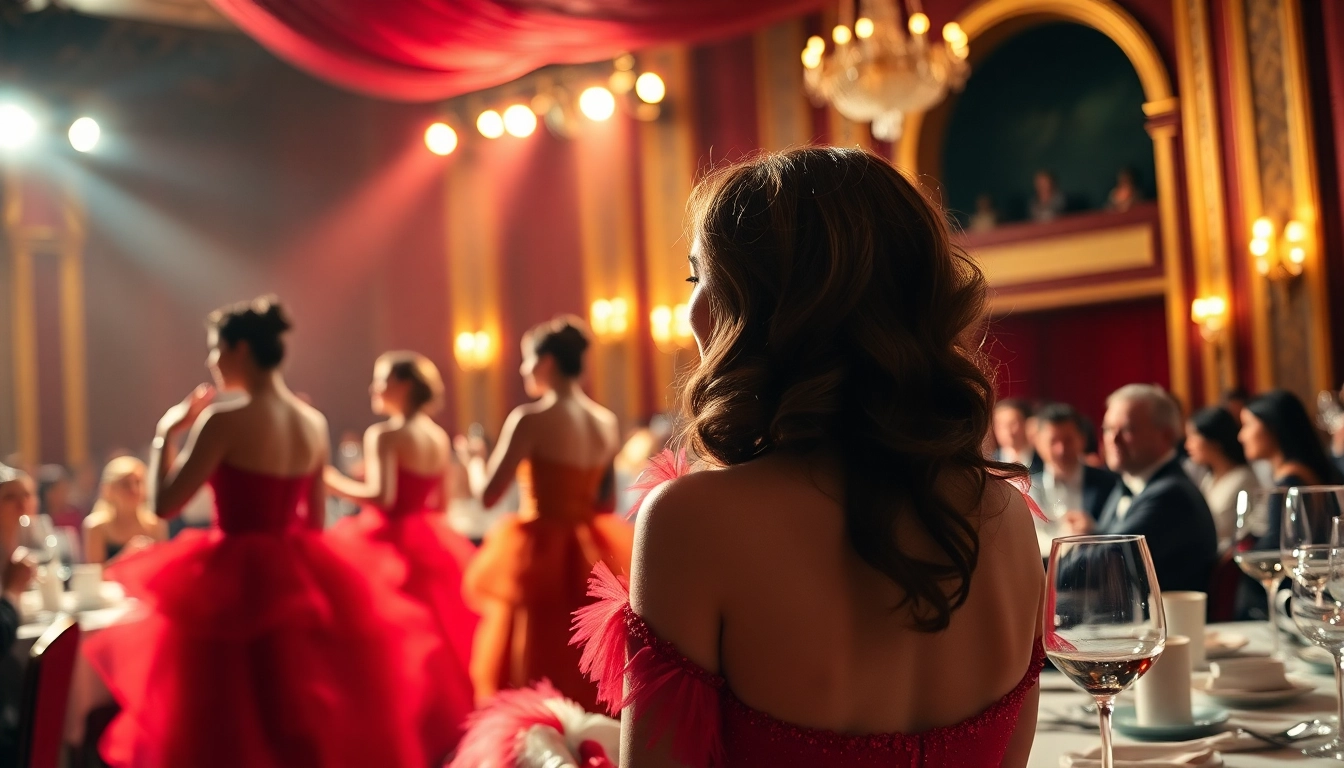Understanding Figurative Art: Techniques, Styles, and Important Influences
What is Figurative Art?
Defining Figurative Art
Figurative art, often regarded as a significant branch of the art world, refers to artwork that represents real objects or forms, particularly the human figure. It includes various mediums such as painting, sculpture, and photography, delineating realistic representations while allowing for varying degrees of abstraction. Unlike abstract art, which seeks to evoke emotions through colors and shapes without clear references to the observable world, figurative art distinctly portrays identifiable forms, often drawing deeply on the visual and emotional experiences tied to these representations.
Historical Context and Evolution
Figurative art has roots that stretch back to prehistoric times, with cave paintings illustrating the early human experience through representations of animals and human figures. Moving through eras like the Renaissance, when artists like Leonardo da Vinci and Michelangelo elevated the art of the human form with intricate details and emotional depth, figurative art continued to evolve. The impressionist movement further impacted this genre by introducing techniques that focused on light and movement, creating a new way to depict reality. As art progressed into the 20th century, movements like Expressionism and Surrealism embraced the figurative form but introduced personal interpretations and emotions into the representation.
Key Characteristics of Figurative Art
The defining features of figurative art include a clear reference to the human form or recognizable objects, often encompassing a variety of styles from hyper-realism to abstract interpretations. Here are some prominent characteristics:
- Representation of Realism: Many figurative artworks aim to accurately depict human anatomy, expressions, and gestures, lending an authentic texture to the work.
- Emotional Depth: Figurative art often seeks to convey deep emotional narratives, allowing the viewer to connect with the subject’s feelings.
- Variety in Style: While grounded in realism, figurative art encompasses diverse styles and interpretations, ranging from classical representations to modern abstract forms.
- Contextual Background: The context in which the figures are represented often plays a critical role in conveying a broader narrative, cultural, or socio-political message.
Significant Techniques in Figurative Art
Painting Techniques Used in Figurative Art
Artists utilize several techniques while engaging with figurative art, ensuring the depth and complexity of the subjects are captured. Key techniques include:
- Brushwork: The application of colors can vary from smooth blends to visible strokes, influencing the mood and texture of the painting.
- Chiaroscuro: This technique uses strong contrasts between light and shadow to give the illusion of volume, adding a dynamic quality to the figures.
- Color Theory: Artists often apply color strategically to evoke specific emotions or highlight particular aspects of the subject.
- Layering: Many figurative painters build their works in layers, allowing for a richer palette and depth that brings the subject to life.
Understanding Composition and Perspective
Composition is crucial in figurative art as it draws the viewer’s eye and shapes the narrative of the work. Key elements include:
- Leading Lines: Artists often use natural elements to guide the viewer’s gaze toward the focal points of the artwork.
- Balance: Ensuring a stable composition through the strategic placement of elements can evoke feelings of harmony or tension.
- Depth of Field: Utilizing perspective is essential for creating a three-dimensional look in a two-dimensional medium, enhancing realism.
- Framing: The use of different shapes or elements in the foreground can add layers and context to the main subject.
Use of Color in Figurative Art
Color is a powerful tool in figurative art, used not just for aesthetic appeal but to elicit emotions. Various techniques include:
- Color Harmony: The combination of different colors creates visual interest while maintaining a sense of unity.
- Symbolic Colors: Artists often use color symbolically to convey themes—red for passion, blue for tranquility, etc.
- Warm vs. Cool Colors: The use of warm colors can create an intimate and inviting atmosphere while cool colors can evoke feelings of distance or aloofness.
Famous Artists and Their Contributions to Figurative Art
Influential Figures in History
Throughout history, numerous artists have significantly influenced the practice and perception of figurative art. Among them:
- Leonardo da Vinci: Renowned for his mastery in anatomy and emotion, da Vinci’s works, like “The Last Supper,” serve as high points in the figurative art canon.
- Michelangelo: His sculptures, including “David,” are celebrated for their exquisite detail and emotional expression, showcasing the power of the human form.
- Raphael: Known for his balanced compositions and serene subjects, Raphael’s contributions to figurative art have left a lasting legacy.
Modern Masters of Figurative Art
In contemporary art, several artists continue to push the boundaries of figurative art. They include:
- Lucian Freud: Known for his intensely realistic portraits, Freud explored the human condition through psychologically complex depictions.
- Jenny Saville: Her large-scale figurative paintings challenge conventional representations of the human body, often focusing on themes of femininity and identity.
- Jeff Koons: Although more aligned with postmodernist tendencies, Koons’ sculptures often play with figurative elements, transforming perceptions of commercial art.
Impact of Cultural Movements on Figurative Art
Various cultural and social movements have greatly influenced the practice of figurative art:
- Feminism: Women artists have increasingly utilized figurative art to challenge and expand representations of the female form within societal contexts.
- Postmodernism: The questioning of traditions has led to hybrid forms of figurative art that blend elements from different genres and eras.
- Globalization: Today’s figurative artists often draw upon a vast array of cultural references, increasing the complexity and diversity of the genre.
Exploring Different Styles Within Figurative Art
Realism vs. Abstraction in Figurative Art
Within figurative art, two distinct styles, realism and abstraction, often coexist yet serve different purposes. Realism aims to depict subjects accurately and truthfully, capturing the essence of life as it is. In contrast, abstraction allows artists to interpret the subjects creatively, using shapes and colors to evoke emotion rather than focusing solely on truth. The balance between these styles can often lead to compelling results, offering depth and varied experiences to the viewer.
Contemporary Interpretations
Contemporary figurative art has embraced technological advancements and new mediums. Artists today utilize digital tools to create virtual figures and installations that challenge perceptions and invite interaction. This era also celebrates mixed media, where traditional painting techniques are combined with photography and sculptural elements, providing an enriched viewing experience.
Cross-Inspiration with Other Art Forms
Figurative art often intersects with other genres and practices, leading to hybrid forms and renewed interpretations. For instance, artists may incorporate elements of performance art, dance, or theater, enriching the narrative quality of their works. This cross-pollination fosters innovation and energizes the genre, appealing to broader audiences.
The Role of Figurative Art in Society
Figurative Art as a Storytelling Medium
Much of figurative art’s strength lies in its storytelling capabilities. By presenting recognizable subjects, artists can convey complex narratives that reflect societal values, struggles, and triumphs. Figurative art serves as a historical document, capturing an era’s ethos and allowing future generations to explore human experiences through visual narratives.
The Emotional Impact of Figurative Art
Figurative art possesses a unique ability to elicit emotional responses. Viewers often relate to the figures they see, feeling empathy, joy, or sorrow. This emotional connection can prompt personal reflection, discussions on societal themes, or inspire action. The power of depicting the human form lies in its capacity to mirror our own experiences, evoking strong responses and fostering deeper connections.
Celebrating Diversity through Figurative Art
The evolution of figurative art has increasingly embraced themes of diversity, challenging singular narratives and representations of identity. Artists today explore issues of ethnicity, gender, and culture, advocating for the inclusion of multiple perspectives within the figurative realm. This celebration not only enriches the dialogue around figurative art but also fosters a more comprehensive understanding of the human condition.













Post Comment